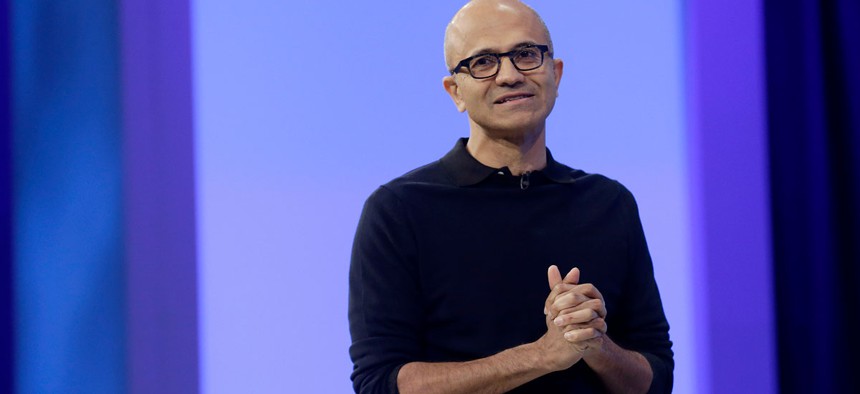Microsoft Unveils Its Successor to Internet Explorer

Microsoft CEO Satya Nadella Jeff Chiu/AP
The company today took the wraps off its new browser, Microsoft Edge, at its developer conference.
Microsoft is ready to put the legacy of Internet Explorer behind it.
The company today took the wraps off its new browser, Microsoft Edge, at its developer conference, introducing features such as integration with Microsoft’s digital assistant Cortana, the ability to annotate web pages, and a distraction-free reading mode.
The company first teased this new browser, then dubbed Project Spartan, in January. Though Microsoft Edge was designed to replace Internet Explorer, the legacy browser will be sticking around for enterprise customers—the same folks who’ve clung onto Windows XP.
With Microsoft Edge, the focus is on minimalism and simplicity—a big contrast from Internet Explorer’s reputation as a slow, buggy, and now outdated browser. But breaking away from Internet Explorer’s checkered history will ultimately depend on the adoption of Windows 10, since Microsoft Edge will not run on older operating systems.
Thus far, the company has struggled heavily with fragmentation. At 58% market share, Windows 7 is currently the most popular desktop operating system; behind it are Windows XP at 17% and Windows 8.1—the latest available version—at 10.6%.
That said, Microsoft’s thinking big with its newest operating system, which launches this summer. The company declared at its Build conference that it hopes to have 1 billion devices running on Windows 10 in two to three years. But judging by the performance of the last few releases, it seems more likely that Internet Explorer will continue to haunt Microsoft for some time.


